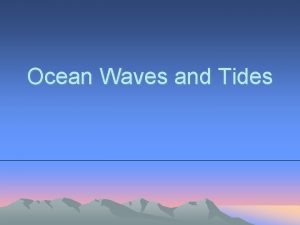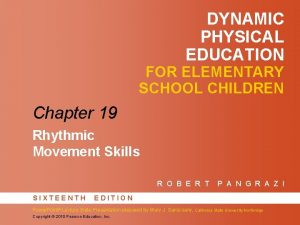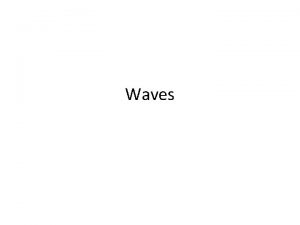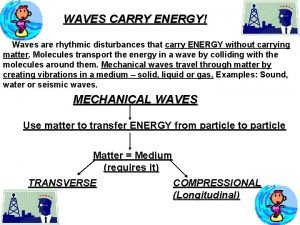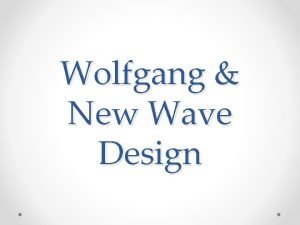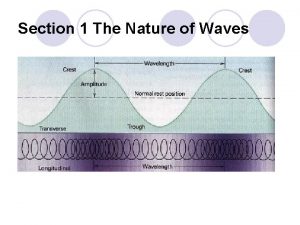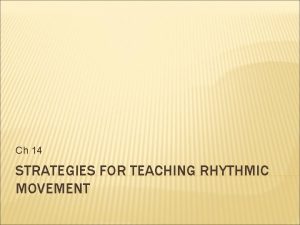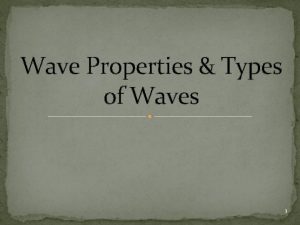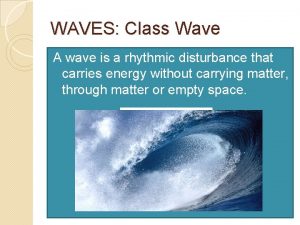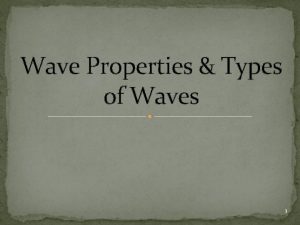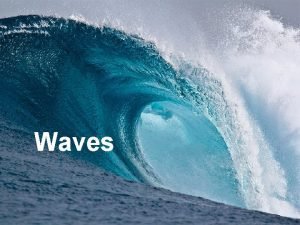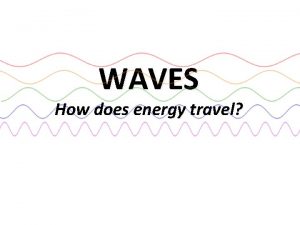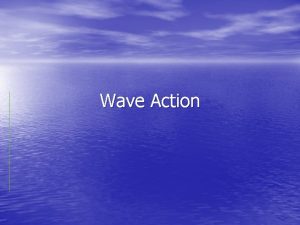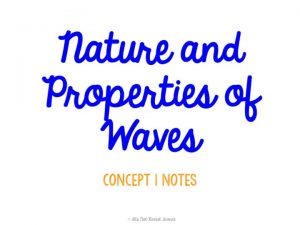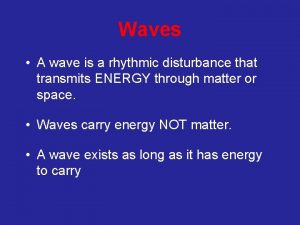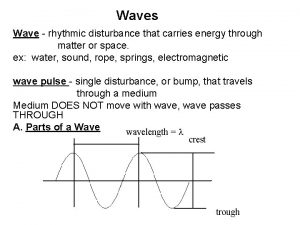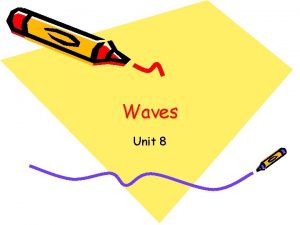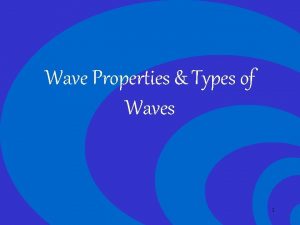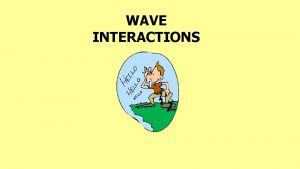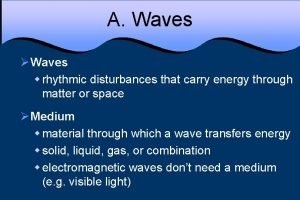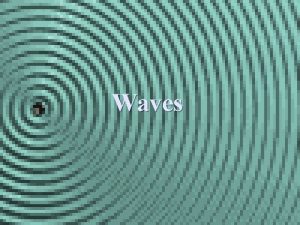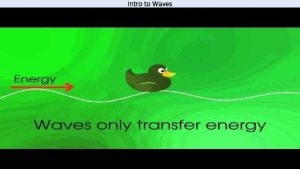Waves Waves A Wave is a rhythmic movement

























- Slides: 25

Waves

Waves • A Wave is a rhythmic movement that carries energy through matter or space. • In oceans, waves move through seawater

Waves Caused by: • Wind • Earthquakes • Gravitational force of the Moon and Sun.

Waves On The Beach • Most of the waves we see are at the beach.

Waves On The Beach • As the wave travels in shallower water it slows and eventually falls forward as a breaker.

Wind or Storm Waves • The most familiar waves are wind generated.

Wind or Storm Waves • Three things determine how large these waves can become.

1. Wind Speed • This is the speed that the wind is blowing. • This is usually measured in knots or nautical miles per hour.

2. Fetch • Fetch refers to the distance over which the wind blows. • If a wind blows over thousands of miles the waves can get much larger than blowing across a small pond.

3. Duration • Duration refers to the time over which the wind blows. • Winds in some areas may blow strong for long periods of time which can produce large waves.

Parts of a Wave • Crest – highest point of a wave • Trough – lowest point of a wave • Wavelength – horizontal distance between two crests or two troughs • Wave Height – vertical distance between the crest and the trough

Wavelength Wave Height Crest Still Water Trough Wave Parts

Wave Movement • When a wave passes through the ocean, individual water molecules move up and down but they do not move forward or backward.


Wave Movement • The crest outruns the trough and the crest collapses – it breaks against the shore. • In this case, water does move forward and backward.


Waves Caused by Wind • When wind blows across a body of water, friction causes the water to move along with the wind.




Tsunamis • Are produced by earthquakes and other seismic disturbances. aka seismic sea waves.

Tsunamis • Tsunamis were once called Tidal waves, but they have nothing to do with the tides.

Tsunamis • They are very long, fast moving waves. • They can have wavelengths of 150 miles. • They can travel at over 450 miles per hour! As fast as a jet!

The Danger of Tsunamis • In the open ocean, a tsunami may only have a wave height of a few feet.

The Danger of Tsunamis • As the wave approaches shallow water, it builds to heights that can reach greater than 100 feet.
 A rhythmic movement that carries energy
A rhythmic movement that carries energy Pearson education
Pearson education With reference to waves what is a disturbance
With reference to waves what is a disturbance Waves are rhythmic disturbances that carry
Waves are rhythmic disturbances that carry Rhythmic disturbances that carry energy
Rhythmic disturbances that carry energy P and s wave chart
P and s wave chart Mechanical waves vs electromagnetic waves venn diagram
Mechanical waves vs electromagnetic waves venn diagram Transverse and longitudinal waves both *
Transverse and longitudinal waves both * Full wave rectified sine wave fourier series
Full wave rectified sine wave fourier series Sound is a transverse wave true or false
Sound is a transverse wave true or false Examples of mechanical waves
Examples of mechanical waves Half wave rectifier meaning
Half wave rectifier meaning A ____ is a repeating disturbance or movement that
A ____ is a repeating disturbance or movement that Short wave vs long wave radiation
Short wave vs long wave radiation Velocity frequency wavelength triangle
Velocity frequency wavelength triangle Full wave rectifier center tapped transformer
Full wave rectifier center tapped transformer Wave symmetry
Wave symmetry Wave wave repeating
Wave wave repeating Difference between full wave and half wave rectifier
Difference between full wave and half wave rectifier Wolfgang weingart new wave
Wolfgang weingart new wave D'arsonval meter movement used with half-wave rectification
D'arsonval meter movement used with half-wave rectification Ability of two or more waves to combine and form a new wave
Ability of two or more waves to combine and form a new wave What are locomotor and actual movement
What are locomotor and actual movement Movement and non movement area
Movement and non movement area Compare and contrast p waves and s waves using venn diagram
Compare and contrast p waves and s waves using venn diagram Mechanical waves and electromagnetic waves similarities
Mechanical waves and electromagnetic waves similarities
